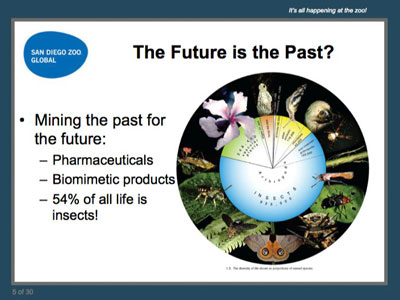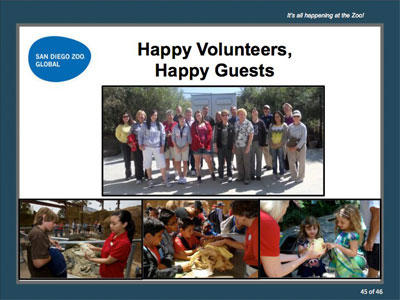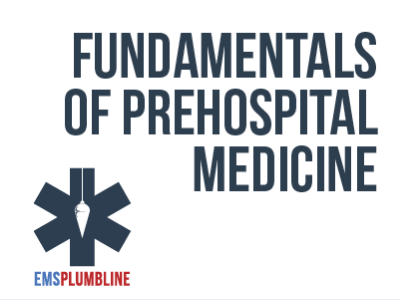 |
Biomimicry/Bioinspiration: a novel activity to further conservation involving engineers, business, and San Diego Zoo Global |
1.00 |
Bioinspiration, also known as biomimicry, is an interdisciplinary process in which biological principles and elements are studied in order to draw analogies to be applied to human innovation. Learn how we introduce students to the concept of bioinspiration through a variety of education programs. We will also describe our approach when working with students to foster creativity and think in new and innovative ways. |
 |
Birds |
2.00 |
This course will provide an introduction to birds, including an overview of physical characteristics, habitat, behavior, reproduction and the conservation efforts dedicated to protecting this taxonomic group. |
 |
Bleeding - Paramedic Overview |
2.00 |
Clinical Pharmacologist, Nicole Acquisto, spends time in the classroom with four experienced paramedics. In this session she reviews the ALS management of the Bleeding Cascade and briefly reviews Thromboelastography. |
 |
Blended Learning |
1.00 |
How do you effectively take a tired old lecture series or outdated formalized training and turn it into a vibrant and engaging program perfect for your learner audiences? For most organizations, blended learning is a MUST. Follow our journey from investigation to implementation of training for a variety of volunteer assignments. Explore a multitude of techniques to teach a broad range of learners effectively and efficiently. Join us as we share tips and techniques on implementing blended learning. |
 |
Bloodborne Pathogens and HIV (Corrections) |
1.00 |
In this course, you will learn about the characteristics of bloodborne pathogens, diseases caused by these pathogens, such as HIV, and how they are transmitted. You will also learn the elements of an exposure control plan and how to prevent contact with or infection from contaminated body fluids. In addition, you will learn how to handle exposure incidents involving blood, and the signs, labels, and color-coding used to warn of biohazards and bloodborne pathogens. This training is provided to help employers provide a safe and healthful work environment for their employees and minimize the possibility of employee exposure to bloodborne pathogens. |
 |
Bloodborne Pathogens and HIV (Human) |
1.00 |
In this course, you will learn about the characteristics of bloodborne pathogens, diseases caused by these pathogens, such as HIV, and how they are transmitted. You will also learn the elements of an exposure control plan and how to prevent contact with or infection from contaminated body fluids. In addition, you will learn how to handle exposure incidents involving blood, and the signs, labels, and color-coding used to warn of biohazards and bloodborne pathogens. This training is provided to help employers provide a safe and healthful work environment for their employees and minimize the possibility of employee exposure to bloodborne pathogens.
This course is labeled with (Human) to indicate that it is not animal-related.
|
 |
Bloodborne Pathogens and HIV (Short) |
0.33 |
This course will help you define Bloodborne Pathogens (BBP), identify common types, identify how BBP are transmitted and contracted, determine reasonable anticipation for encountering BBP, define an Exposure Control Plan, and define PPE, its effectiveness, and decontamination when BBP are encountered. |
 |
Bony Fishes Collection |
10.00 |
Whether they are cruising the vast open sea, blending in with the bottom, lurking in the kelp beds, hiding in the coral, or fighting their way upstream, fish live in a world that’s vastly different than ours. In the Bony Fishes Collection, we’ll dive into this world. You’ll explore:
• Bony Fishes Module 1: Physical Characteristics
• Bony Fishes Module 2: Distribution and Habitat
• Bony Fishes Module 3: Ecology and Behavior
• Bony Fishes Module 4: Reproduction and Development
• Bony Fishes Module 5: Conservation.
|
 |
Brain Development in Infants and Toddlers (CDA 8) |
2.00 |
Brain development has changed over the last 20 years. Early brain development focused mainly on the intellectual aspects of the brain, but over the last 10 years, more focus has been placed on the social emotional exchanges in infancy and how that affects brain development. Early experiences predispose how children see the world. This course is designed to be part of a Child Development Associate (CDA) Credential™ curriculum and covers CDA Subject Area 8, Understanding Principles of Child Development and Learning. This course can also be taken as a stand-alone learning event or as part of a broader early childhood education curriculum. |
 |
Brick by Brick: Assessing the Elderly—Female Cardiac Patient |
1.00 |
We know that there are unique challenges when assessing elderly patients. BLS providers also encounter unique challenges when assessing females for potential cardiac problems. This lesson briefly reviews the BLS assessment skills that are required for both populations. The introduction of 12-lead ECG acquisition gives the BLS provider a chance to orient themselves to the skills necessary when working in a system that requires recording and/or transmission of such tracings. The multiple choice exam is designed to test your knowledge of the material you just reviewed. You have two attempts to gain an 75% or higher on this exam. Please take your time and answer each question carefully. |











